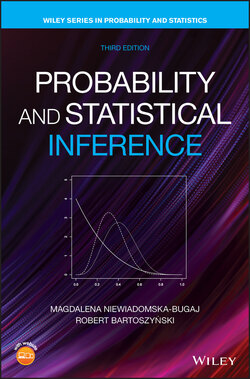Читать книгу Probability and Statistical Inference - Robert Bartoszynski - Страница 84
Example 3.8
ОглавлениеConsider the problem of estimating the number of fish in a lake (the method described below is also used to estimate the sizes of bird or wildlife populations). The lake contains an unknown number of fish. To estimate , we first catch fish, label them, and release them back into the lake. We assume here that labeling does not harm fish in any way, that the labeled fish mix with unlabeled ones in a random manner, and that remains constant (in practice, these assumptions may be debatable). We now catch fish, and observe the number, say , of labeled ones among them. The values and are, at least partially, under the control of the experimenter. The unknown parameter is , while is the value occurring at random, and providing the key to estimating . Let us compute the probability of observing labeled fish in the second catch if there are fish in the lake. We may interpret fish as balls in an urn, with labeled and unlabeled fish taking on the roles of red and blue balls. Formula (3.22) gives
(3.23)
To estimate , we can use the principle of maximum likelihood (to be explored in detail in Chapter 11). At present, it suffices to say that this principle suggests using as , an estimator of , the value of that maximizes 3.23. Let us call this value . Let us call this value . It depends on the observed value and hence is itself random. Thus, is defined by the condition
and our objective is to find the maximizer of . Since is a discrete variable, we cannot use methods of finding a maximum based on derivatives. Instead, the method that works in this case is based on the observation that if the function has a maximum (possibly local) at , then and . If two neighboring probabilities have equal values, the ratio equals 1. Consequently, we should study the ratio and find all arguments at which this ratio crosses the threshold 1. After some reduction, we have
The above ratio always exceeds 1 if , so in this case the maximum is not attained. Assume now that . The inequality
is equivalent to
(3.24)
with the equality occurring if and only if . Thus, the maximum is attained at1
and also at if the latter value is an integer. Let us observe that the result above is consistent with common intuition: The proportion of labeled fish in the whole lake is , and it should be close to the proportion of labeled fish in the second catch. This gives the approximate equation , with the solution .
